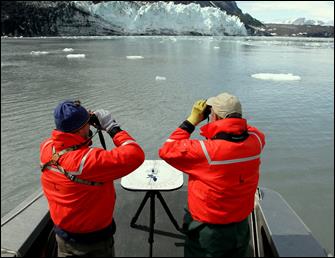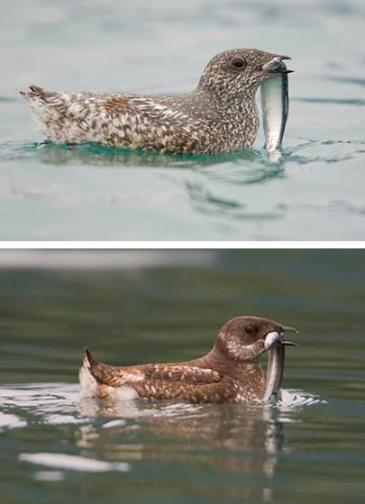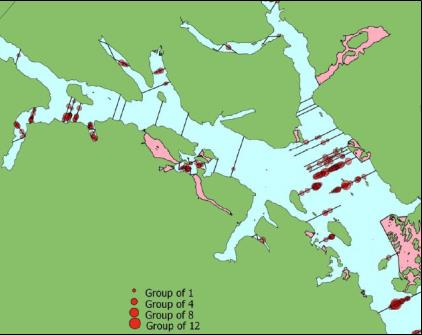Media Included
- Mystery of the Murrelets - Long-Term Monitoring in Glacier Bay
How do we keep track of the abundance of murrelets? How many are there in Glacier Bay?
Project Dates
2009 - 2014
Did You Know?
20-30% of the world’s Kittlitz’s murrelet population depends on the glacial fjords of Glacier Bay National Park and Preserve for summer breeding habitat. Nesting takes place on high, remote, south-facing mountain ledges, where a single egg is laid on bare ground.
What is SEAN?

The Southeast Alaska Inventory and Monitoring Network (SEAN) is one of 32 networks across the United States that further NPS efforts to improve park management through greater reliance on scientific information. SEAN supports the three national park units in Southeast Alaska (Glacier Bay, Sitka and Klondike Gold Rush); its offices are located in Juneau. The Inventory and Monitoring Program designs and implements long-term ecological monitoring and provides results to park managers, science partners, and the public. The intent is to provide periodic assessments of critical resources to evaluate the integrity of park ecosystems and better understand ecosystem processes.
Introduction

The Kittlitz’s murrelet (KIMU) is a rare seabird endemic to Alaska and eastern Russia, with the highest densities in the northern Gulf of Alaska. Though they occur in a variety of open-water habitats, KIMUs are often associated with areas near tidewater glaciers.
Kittlitz’s murrelets were selected as one of 12 core vital signs being monitored by SEAN based on population declines, status as a candidate for protection under the Endangered Species Act, and their association with drivers of ecosystem change, such as glacial dynamics, climate change, and human activity. Long-term monitoring of KIMU will inform decisions related to species protection, park management, ecosystem health, and climate change response. Marbled murrelets, more common than KIMUs in Southeast Alaska but currently listed as threatened in California, Oregon and Washington, are also monitored in Glacier Bay.
Methods
SEAN researchers implemented a pilot program for monitoring KIMU in Glacier Bay in 2009. Sampling and data analysis methods were refined through 2011 to ensure a statistically robust and logistically practical program. Boat-based line transect surveys are completed each July when murrelet aggregations are highest. The boat travels along transects oriented perpendicular to the shoreline using two observers. The observers count all murrelets on the water, recording distance and angle; this “distance sampling” approach provides a statistically powerful way to estimate abundance. Sampling transects are selected using a random, yet spatially balanced method.
SEAN monitors oceanographic conditions to provide context for interpreting changes in murrelet population sizes and distribution. Researchers expect future analyses to consider how July oceanographic conditions might explain some of the variation seen in KIMU distribution.
Findings

Kittlitz’s murrelets are believed to have declined dramatically over the last three decades due to factors that are not well understood. Glacier Bay proper supports about 14,000 birds. Uncertainty in local population trends remains, in part because of differences in survey and analytic methods over the last 20 years.
Learn More
“Monitoring Kittlitz's and marbled murrelets in Glacier Bay National Park: 2010 annual report.” This and other information is available on the SEAN website at: www.science.nature.nps.gov/im/units/sean/KM_main.aspx
Last updated: September 15, 2016






